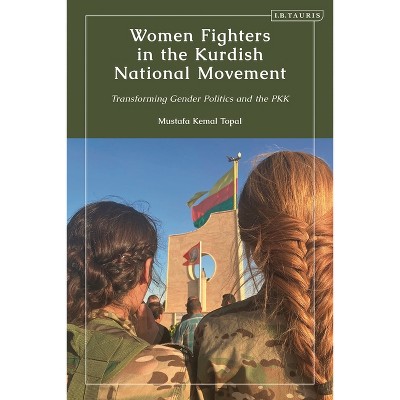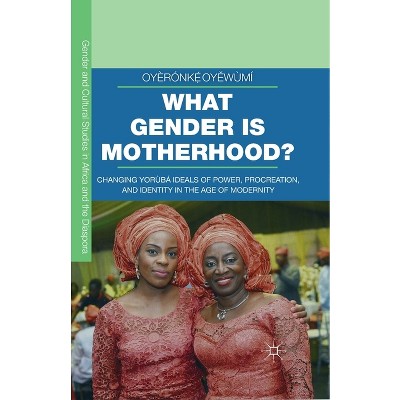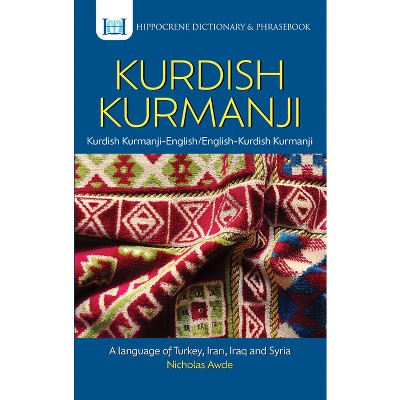Sponsored

Art, Gender and Migration in the Kurdish Diaspora - (Kurdish Studies) by Özlem Belçim Galip (Hardcover)
$115.99
In Stock
Eligible for registries and wish lists
Sponsored
About this item
Highlights
- This book focuses on the cultural and intellectual activities of Kurdish migrant women through artistic and aesthetic forms of production in Belgium, France, Germany, Sweden and the UK.
- About the Author: Özlem Belçim Galip is a researcher in the School of Anthropology and Museum Ethnography at the University of Oxford and a former Marie Curie postdoctoral fellow at the Institute of Social and Cultural Anthropology at University of Oxford, UK.
- 264 Pages
- Social Science, Women's Studies
- Series Name: Kurdish Studies
Description
About the Book
"This book focuses on the cultural and intellectual activities of Kurdish migrant women through artistic and aesthetic forms of production in Belgium, France, Germany, Sweden and the UK. Using in-depth interviews with over 40 Kurdish women artists, Ozlem Galip examines how artistic, literary and cultural productions, incorporating the fields of film, theatre and music, are articulated within the structures of nation states, leading to the interrogation of the impact of western and local knowledge, patriarchy, the nation-state and globalisation. Galip also analyses how European policies affect the development of cultural engagement of Kurdish migrant women, and how such engagements help these women to integrate into European society"--Book Synopsis
This book focuses on the cultural and intellectual activities of Kurdish migrant women through artistic and aesthetic forms of production in Belgium, France, Germany, Sweden and the UK. Using in-depth interviews with over 40 Kurdish women artists, Ozlem Galip examines how artistic, literary and cultural productions, incorporating the fields of film, theatre and music, are articulated within the structures of nation states, leading to the interrogation of the impact of western and local knowledge, patriarchy, the nation-state and globalisation. Galip also analyses how European policies affect the development of cultural engagement of Kurdish migrant women, and how such engagements help these women to integrate into European society.Examining the gendered experiences of diaspora from all four regions of Kurdistan; Iraq, Iran, Syria and Turkey, this book challenges ideas about gender, migration and art through the lens of women artistic production with a focus on women-led activism and the changing integration and migration policies of Europe.
Review Quotes
Shedding light on aesthetic and intellectual work among Kurdish women in five European countries, this book contributes to the widening of our understanding of how Kurdish women engage in society in Europe as women and as intellectuals. It also contributes to our understanding of variations across countries as well as similarities and transnational links.
Dr. Anne Sofie Schøtt, Assistant Professor, The Royal Danish Defence College, Denmark
The book has a very clear focus, the feminist-intersectional and post-colonial analytical framework is well chosen.
Joost Jongerden, Professor, Wageningen University, Netherlands
About the Author
Özlem Belçim Galip is a researcher in the School of Anthropology and Museum Ethnography at the University of Oxford and a former Marie Curie postdoctoral fellow at the Institute of Social and Cultural Anthropology at University of Oxford, UK. She is the author of Imagining Kurdistan: Identity, Culture, and Society (I.B.Tauris, 2015).Dimensions (Overall): 9.21 Inches (H) x 6.14 Inches (W) x .63 Inches (D)
Weight: 1.19 Pounds
Suggested Age: 22 Years and Up
Number of Pages: 264
Genre: Social Science
Sub-Genre: Women's Studies
Series Title: Kurdish Studies
Publisher: Bloomsbury Publishing PLC
Format: Hardcover
Author: Özlem Belçim Galip
Language: English
Street Date: September 19, 2024
TCIN: 94299041
UPC: 9780755650583
Item Number (DPCI): 247-46-5576
Origin: Made in the USA or Imported
If the item details aren’t accurate or complete, we want to know about it.
Shipping details
Estimated ship dimensions: 0.63 inches length x 6.14 inches width x 9.21 inches height
Estimated ship weight: 1.19 pounds
We regret that this item cannot be shipped to PO Boxes.
This item cannot be shipped to the following locations: American Samoa (see also separate entry under AS), Guam (see also separate entry under GU), Northern Mariana Islands, Puerto Rico (see also separate entry under PR), United States Minor Outlying Islands, Virgin Islands, U.S., APO/FPO
Return details
This item can be returned to any Target store or Target.com.
This item must be returned within 90 days of the date it was purchased in store, shipped, delivered by a Shipt shopper, or made ready for pickup.
See the return policy for complete information.
Trending Non-Fiction

$15.68
Buy 2, get 1 free select books
4.8 out of 5 stars with 181 ratings

$19.31
was $20.98 New lower price
Buy 2, get 1 free select books
4.1 out of 5 stars with 53 ratings

$19.58
MSRP $29.00
Buy 2, get 1 free select books
4.7 out of 5 stars with 11 ratings

$4.59
MSRP $7.99
Buy 2, get 1 free select books
4.8 out of 5 stars with 116 ratings

$6.20
MSRP $10.95
Buy 2, get 1 free select books
4.8 out of 5 stars with 32 ratings

$7.09
MSRP $9.99
Buy 2, get 1 free select books
4.9 out of 5 stars with 45 ratings





